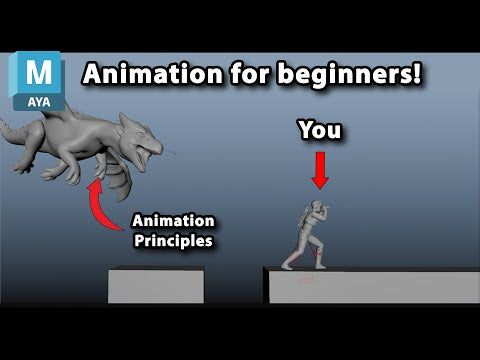Your Cart is Empty
Customer Testimonials
-
"Great customer service. The folks at Novedge were super helpful in navigating a somewhat complicated order including software upgrades and serial numbers in various stages of inactivity. They were friendly and helpful throughout the process.."
Ruben Ruckmark
"Quick & very helpful. We have been using Novedge for years and are very happy with their quick service when we need to make a purchase and excellent support resolving any issues."
Will Woodson
"Scott is the best. He reminds me about subscriptions dates, guides me in the correct direction for updates. He always responds promptly to me. He is literally the reason I continue to work with Novedge and will do so in the future."
Edward Mchugh
"Calvin Lok is “the man”. After my purchase of Sketchup 2021, he called me and provided step-by-step instructions to ease me through difficulties I was having with the setup of my new software."
Mike Borzage
Revolutionizing Design: Exploring the Capabilities and Future Trends of Advanced Mesh Generation Tools
August 14, 2024 4 min read


Introduction
Mesh generation is a fundamental process in design and engineering that involves creating a network of elements or cells to represent a geometric domain. These meshes are crucial for computational simulations, including finite element analysis (FEA), computational fluid dynamics (CFD), and other numerical methods. Historically, mesh generation began with manual techniques that required significant time and expertise. However, the evolution of automated tools has revolutionized the way meshes are created, making the process more efficient and accurate.
The purpose of this article is to explore the capabilities and applications of advanced mesh generation tools. We will address key challenges in the field and discuss future prospects that could further enhance the utility of these tools in various domains.
Core Capabilities of Advanced Mesh Generation Tools
Automated Mesh Creation
Advanced mesh generation tools utilize sophisticated algorithms and methodologies to automate the mesh creation process. These include Delaunay triangulation, advancing front methods, and octree-based techniques. The automation not only speeds up the process but also eliminates human error, ensuring a higher quality mesh.
Benefits of automated mesh creation over traditional manual meshing include:
- Significant time savings.
- Reduction in human error.
- Consistent and repeatable results.
High Fidelity and Accuracy
Achieving high fidelity and accuracy in mesh generation is paramount, especially for simulations that require detailed and precise geometries. Techniques such as adaptive meshing, where the mesh density varies according to the complexity of the geometry, and curvature-based refinement are employed to enhance the quality of the mesh.
The importance of high fidelity and accuracy in simulations and real-world applications cannot be overstated. Accurate meshes lead to more reliable simulation results, which are critical in fields such as aerospace, automotive, and biomedical engineering.
Scalability and Performance
As designs become more complex, the ability to handle large datasets efficiently becomes crucial. Advanced mesh generation tools incorporate optimization techniques such as parallel processing and GPU acceleration to manage and process large and complex datasets swiftly.
Key optimization techniques for fast and efficient meshing include:
- Parallel processing to distribute the computational load.
- GPU acceleration for faster computation.
- Memory management to handle large datasets.
Applications and Use Cases
Engineering and Simulation
In engineering and simulation, mesh generation plays a critical role in structural analysis, fluid dynamics, and thermal analysis. For instance, in structural analysis, a finely meshed model can accurately predict stress distributions and potential failure points. Similarly, in fluid dynamics, detailed meshes allow for precise simulations of fluid flow and heat transfer.
The impact of advanced mesh generation tools on reducing time and cost in engineering processes is profound. Automated meshing reduces the pre-processing time, allowing engineers to focus on analysis and design optimization.
Additive Manufacturing
In additive manufacturing, mesh generation is essential for preparing models for 3D printing. High-quality meshes ensure that the printed parts have the desired structural integrity and are free of defects. Mesh generation tools can also optimize the geometry for printability, reducing the likelihood of print failures.
Ensuring structural integrity and printability through advanced mesh generation tools is vital for producing reliable and high-quality 3D printed parts.
Architectural and Urban Planning
Mesh generation finds significant applications in architectural and urban planning. Detailed meshes are used to create accurate models of buildings and urban environments, which can be utilized in construction planning, visualization, and simulation.
Enhancing accuracy in construction and planning processes through advanced mesh generation tools leads to better project outcomes and reduced costs.
Future Trends and Challenges
Integration with AI and Machine Learning
One of the most promising future trends in mesh generation is the integration with AI and machine learning. These intelligent algorithms can enhance mesh generation by learning from previous projects, predicting optimal mesh densities, and even identifying potential problems before they arise.
Predictive capabilities and self-improving systems powered by AI can revolutionize the way meshes are generated, leading to even more efficient and accurate results.
Interoperability and Standards
Ensuring compatibility across different software and platforms is a significant challenge in the field of mesh generation. Efforts towards creating universal meshing standards are crucial for seamless data exchange and collaboration among various tools and systems.
Interoperability and standards are necessary to facilitate the integration of mesh generation tools into diverse workflows and applications.
User Accessibility and Customization
Making advanced mesh generation tools accessible to non-experts is essential for broadening their adoption. User-friendly interfaces, guided workflows, and customizable features can help non-experts leverage these powerful tools effectively.
Customizable features to meet diverse industry needs ensure that the tools can be adapted to various specific requirements and use cases.
Conclusion
In conclusion, mesh generation tools have evolved significantly, offering powerful capabilities that are essential for modern design and engineering. The integration of advanced algorithms, high fidelity, and scalability has made these tools indispensable. As we look to the future, the incorporation of AI, the establishment of universal standards, and the focus on user accessibility will further enhance the utility and adoption of mesh generation tools. The evolving nature of these tools promises a bright future for design and engineering, driven by continuous innovation and improvement.
Also in Design News

Animation for Beginners - Part 2: 12 Animation Principles you NEED to know
January 14, 2025 1 min read
Read More
ZBrush Tip: Enhancing 3D Model Precision with ZBrush's TrimCurve Tool
January 14, 2025 2 min read
Read More
Revit Tip: Utilizing Design Phases to Enhance Revit Project Efficiency and Collaboration
January 14, 2025 1 min read
Read MoreSubscribe
Sign up to get the latest on sales, new releases and more …


